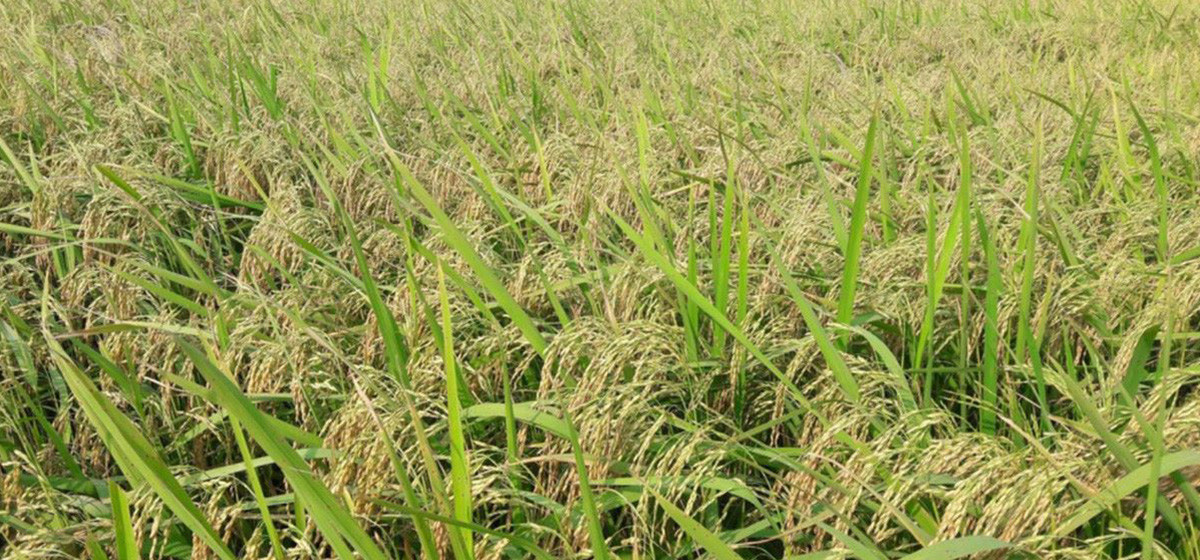KATHMANDU, May 30: Although Nepal continues to import goods it produces domestically, the government has failed to significantly increase the budget needed to boost agricultural production. As domestic food output remains insufficient and the country imports rice, the government has set a target to increase paddy production by around 1.2 million tons in the upcoming fiscal year 2025/26.
Despite this target, the government raised the agriculture budget by only Rs 190 million compared to the current fiscal year 2024/25. Finance Minister Bishnu Paudel allocated a total of Rs 57.48 billion to the agriculture and livestock sector for the next fiscal year. He noted that the current fiscal year's budget had set aside Rs 57.29 billion for the same sector.
The budget aims to transform the additional labor force dependent on agriculture into productive sectors. It adopts a policy to maximize the use of arable land through collective, cooperative, and private firms. The government plans to implement solid programs to achieve self-sufficiency in major food grains, vegetables, fruits, dairy, and meat production.
Under the National Agricultural Modernization Program, the government allocates Rs 3.50 billion to provide capital grants and subsidies for irrigation, fertilizers, seeds, and technology across 21 super zones and 206 zones in the agriculture and livestock sectors.
The budget plans to expand the cultivation area of 15 crops using advanced technology over 4,850 hectares, develop small-scale irrigation infrastructure to provide irrigation facilities to an additional 6,000 hectares, and allocate capital grants for block-level programs from the provincial government and pocket-area programs from local governments. It also expands the coverage of currently operating zones and super zones.
Govt to import 1 million tons of paddy and 100,000 tons of rice...

The budget allocates Rs 830 million to promote the cultivation of high-value crops in 80 local units across the mid and high hill districts of Lumbini, Karnali, and Sudurpaschim provinces. It also increases the supply of chemical fertilizers to reach 600,000 metric tons.
The budget allocates Rs 28.82 billion to subsidize chemical fertilizers. The government plans to prepare for establishing chemical fertilizer factories through the Investment Board. To maintain soil quality and boost productivity, it allocates Rs 400 million for promoting organic agriculture programs.
The government plans to promote production on cultivable fallow land near the Pushpalal Mid-Hill Highway and Madan Bhandari Highway. It sets support prices for crops such as rice, maize, wheat, sugarcane, and coffee at least 15 days before planting. The Ministry of Agriculture and Livestock Development has directed the Food and Trading Company Limited to purchase these products if market shortages occur. Additionally, the government will sign advance purchase agreements for agricultural produce after planting.
The budget mandates quality and pesticide testing of food grains, vegetables, fruits, meat, and dairy products before sellers can put them on the market. It also directs wholesale market centers to conduct rapid pesticide residue tests on fresh vegetables and fruits.
To boost exports of organic fruits, vegetables, spices, and other high-value agricultural products, the government will upgrade plant, food, and animal quarantine services and laboratories to meet international accreditation standards.
The budget speech directs authorities to adopt control measures that reduce crop damage caused by wild animals such as monkeys, porcupines, and nilgai. It also promotes cultivating crops like simal (silk cotton), tarul (yam), turmeric, tea, coffee, ginger, and chili in monkey-prone areas.
The government aims to attract youth to agriculture by strengthening the ecosystem for land, agricultural inputs, insurance, procurement agreements, and markets. It focuses on making agricultural research results-oriented and tailored to the country's climate and farming systems so that farmers can benefit. The government encourages the private sector to conduct quality seed breeding research and development and requires registering intellectual property generated from agricultural research.
To promote meat export potential, the government prioritizes large-scale livestock farming and quality meat production. It plans to increase livestock productivity by implementing artificial insemination programs for 850,000 animals. The government has allocated Rs 850 million to produce 55 million vaccine doses to control livestock diseases and epidemics in the upcoming fiscal year.
The government allocates funds to produce 42.8 million fish fingerlings and distribute 1 million fruit saplings in the upcoming fiscal year. It plans to establish coffee nurseries and distribute 1 million plants in 20 high-potential local units.
The government ensures adequate food storage for national food security reserves and the SAARC Food Security Bank. To secure safe transportation, storage, and easy market access for agricultural products, it will develop infrastructure through public-private partnerships. It also commits to organizing the supply system and market information flow so farmers receive the full benefits of the value chain.
The government will complete and operate nine large agricultural markets currently under construction. It will also start building modern infrastructure in Semlar, Rupandehi, to support the collection, processing, marketing, and export promotion of agricultural products.
The government has set policies to promote exports by establishing quality standards, conducting laboratory tests, and creating branding for products such as cardamom, tea, coffee, ginger, turmeric, oranges, Akbare chili, chhurpi, and dairy products.
The government will expand access to agricultural and livestock insurance for small and medium farmers. It allocates Rs 2.30 billion to subsidize crop and livestock insurance premiums. Additionally, it will develop the 'Kisan App' and organize SMS services to regularly update farmers on weather forecasts, agricultural product prices, and the availability of agricultural inputs.





































